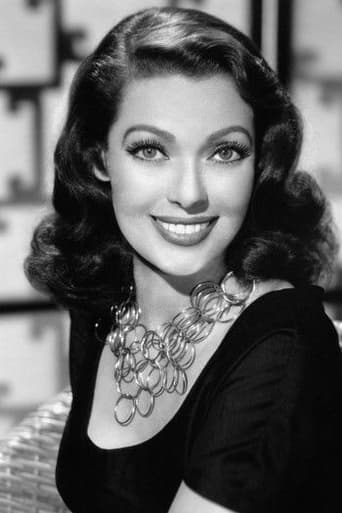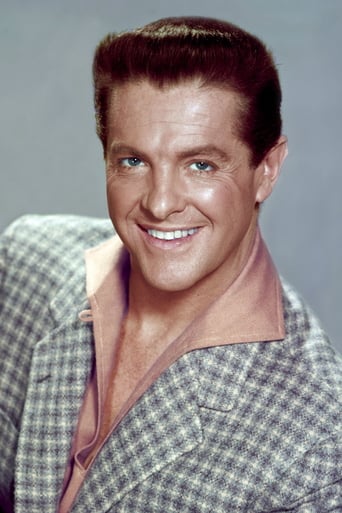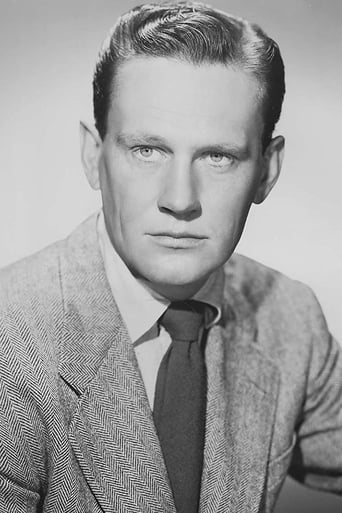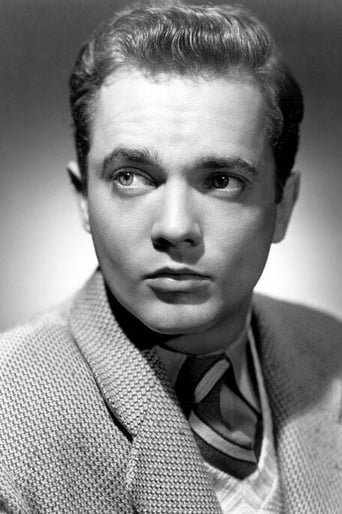TrueJoshNight
Truly Dreadful Film
Raetsonwe
Redundant and unnecessary.
Moustroll
Good movie but grossly overrated
TrueHello
Fun premise, good actors, bad writing. This film seemed to have potential at the beginning but it quickly devolves into a trite action film. Ultimately it's very boring.
JohnHowardReid
Producer: Hal B. Wallis. Copyright 14 January 1949 by Paramount Pictures Inc. New York release at the Paramount: 12 January 1949. U.S. release: 14 January 1949. U.K. release: March 1949. Australian release: 16 June 1949. Sydney release at the Victory: 27 May 1949. 9,243 feet. 103 minutes.COMMENT: No producer in 1940's Hollywood guided such a formidable collection of permanent classics as Hal B. Wallis: All This and Heaven Too, The Sea Hawk, The Letter, The Sea Wolf, Sergeant York, The Maltese Falcon, High Sierra, The Strawberry Blonde, King's Row, The Man Who Came to Dinner, Yankee Doodle Dandy, Now, Voyager, Casablanca, Watch on the Rhine, Saratoga Trunk, Sorry Wrong Number…One of Wallis's talents was the ability to select the right director for the script — and then to get the most out of him! "The Accused", while it is not one of his major films, is an excellent example of this technique.Ketti Frings at this stage was a writer with primarily a radio and stage background (though she had written the 1940 novel, "Hold Back the Dawn"). This training shows in her screenplay for "The Accused". If you close your eyes you can follow the story perfectly well, for it's written like a radio serial — very skillfully written with essential facts put over with power and subtlety, but it's purely verbal. The script has been wholly conceived in aural terms rather than visual.With such a scenario on his hands, what does a producer do? 99% would call in another writer — but not Hal Wallis. He assigns the script to a director with a noted visual flair — William Dieterle — who has given the film such a wonderful sheen and style (aided by atmospheric photography and deft film editing). Notice how deep focus framings are inventively utilized for maximum dramatic impact, how the lighting appropriately changes from the chilling murky gray of the flashback sequences to the contrasting brightness of the campus episodes, how long takes are adroitly inter-cut with reaction shots. The director builds up what is essentially a synthetic Loretta Young vehicle into a psychological thriller of considerable suspense and class. Admittedly, too much footage is still taken up with the familiar Young heart-burnings and hysteria (she even has a pervading off- camera commentary as well), but many of the sequences (particularly those with Sam Jaffe and Wendell Corey) deliver a taut, tense, powerful impact.While the conclusion is somewhat abrupt and predictable, it's a movie that moves all the way thanks to Dieterle's frequent changes of set, scene and camera set-ups, and his skilled use of tracking shots and similar fluid camera movements.For all its aural orientation, the dialogue has a realistic edge to it which fine actors like Wendell Corey know how to deliver with the right amount of intensity. Corey has a tailor-made part, and receives excellent support from character players like Sam Jaffe, Sara Allgood, Bill Mauch (one of the Mauch twins from "The Prince and the Pauper"), Francis Pierlot, Al Ferguson, Charles Williams and Henry Travers (yes, Henry Travers making a surprise unbilled appearance as Jaffe's assistant).Wallis has dressed "The Accused" in great production values, including sets, locations, and a vast crowd of extra players, among whom Bess Flowers can be spotted as a wardress at court. She even has one word of dialogue — "Sure.""I wasn't very happy with Wallis," Dieterle told Tom Flinn. "He used me to try to make something out of very second-rate material." This movie is an intriguing example of that fascinating and entertaining "something".
ccthemovieman-1
The Accused This is one of those popular story lines in which the killing is shown early on and then the film deals with the police trying to piece things together while the killer tries to look innocent.In this case, the "accused" is a woman, played by Loretta Young. She plays a college teacher who defends herself against an obnoxious student but then makes the big mistake of trying to cover up the incident, even though it was self- defense, thinking it would look bad if she was discovered being with this student in the first place. (Today, we read true-life stories of worse, sad to say.)Bob Cummings and Wendell Corey are detectives who know some foul play is involved but then Cummings, who gets increasingly annoying in here, falls in love with Young. He then winds up defending her in the short courtroom finale. Cummings gives a good example how "love is blind."Corey, meanwhile, plays the determined cop who doesn't care what people think of him so long as he solves the crime. He is by far the most interesting of the characters in this film. Sam Jaffe also entertains in a supporting role as a crime doctor.
bmacv
The twist on what we now call sexual harassment lingers as the most interesting aspect of The Accused, an innocuous suspense story with some effective moments. Another lingering aftertaste is the midcentury stereotype of the female academic that's foisted on star Loretta Young -- and the viewer.Psychology professor Young (!), guarded and old-maidish (she's even saddled with the glamourproof name Wilma Tuttle), becomes the object of the unhealthy attentions of one of her students (Douglas Dick). On the pretext of diving for abalone shells off Malibu, he spirits her off to a secluded lover's lane one night and forces himself on her. She bashes in his skull and fakes his death to look accidental.Then she begins to attract more attention -- from Robert Cummings, a lawyer friend of the dead boy's family (he falls for her), and Wendell Corey, a dogged homicide cop. In the acting department, there's no contest; Cummings stays his usual namby-pamby self, while Corey delivers a strong, unsentimental performance, among his best.Much of William Dieterle's direction shows a practiced hand. Especially well handled are the opening sequence of Young fleeing the crime scene, a boxing match where she suffers a flashback, and the ghoulish reconstructions of the murder by forensic pathologist Sam Jaffe.But a glaring structural flaw keeps The Accused lukewarm. We know from the outset that Young acted in self-defense, which pretty well leeches all the suspense out of Corey's implacable pursuit; the tightening case against her packs no impact because it's safe to assume she won't be spending any time with those harpies from Caged. Consequently the film focuses more on her emergence from a cocoon of droopy skirts, a bun in her hair, sleeping pills and swooning spells into a seductive butterfly flitting into Cummings' net.Dick, as the young narcissist, calls to mind such amoral charmers as Robert Walker in Strangers On A Train and John Dall in Rope (a film in which Dick also appeared). It's he -- not young nor Cummings -- who supplies what faint erotic spark this movie, about a sexually-based murder, dares to kindle.
jaykay-10
Here is as "quiet" a suspense film as you are likely to encounter. That is all to the good, as beneath its placid surface crackle psychological crosscurrents that generate tension throughout. Each of the main characters is an interesting study, with ambivalent emotions that alternately spark and grate against those of the others. Additionally (and ironically), these characters are all involved in recognizing and dealing with such behavior, being a psychology professor, a detective and a lawyer respectively. A bit verbose at times, and resolved with a glib, less-than-satisfying ending, this picture nevertheless deserves a wider audience - if it has any at all nowadays. The performances are rock-solid and properly understated for the most part (even by Robert Cummings) in keeping with the conservative small town atmosphere; but there are effective contrasting performances as well, in the smaller roles of the few relatively unbalanced characters, as played by Douglas Dick, Suzanne Dalbert, and especially Sam Jaffee.





